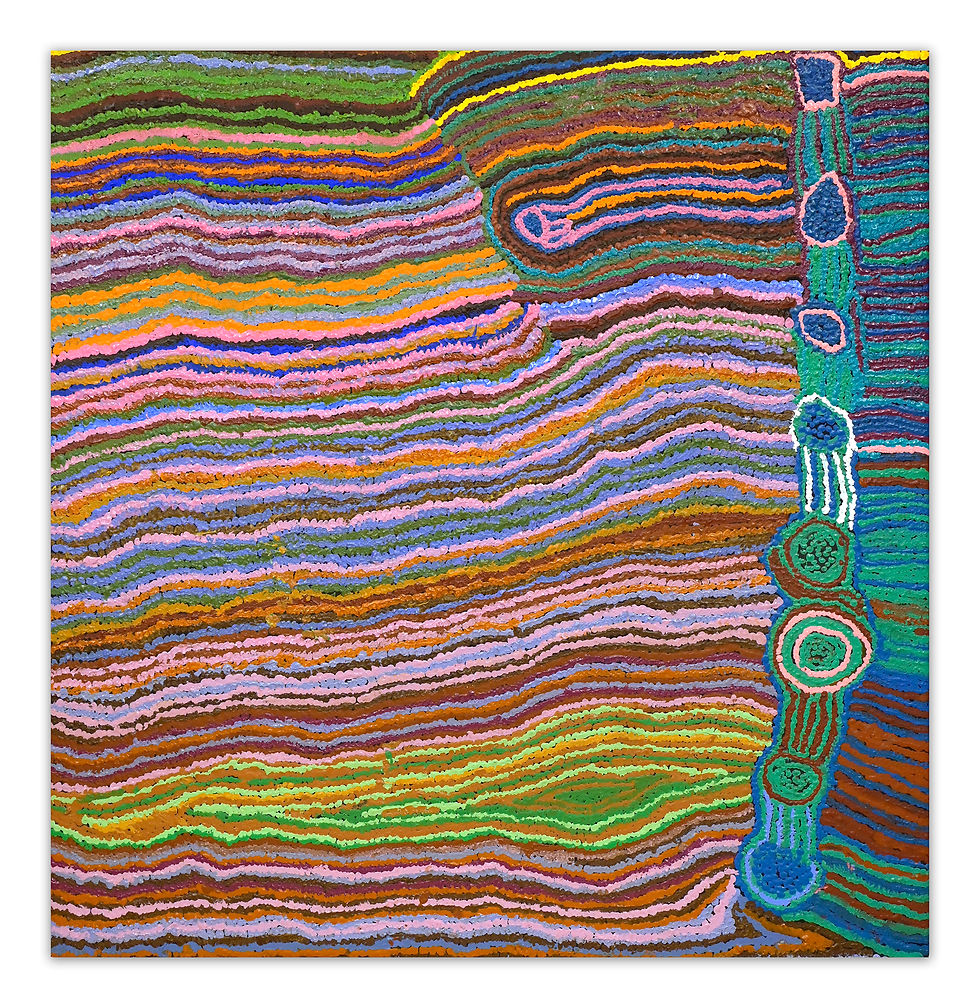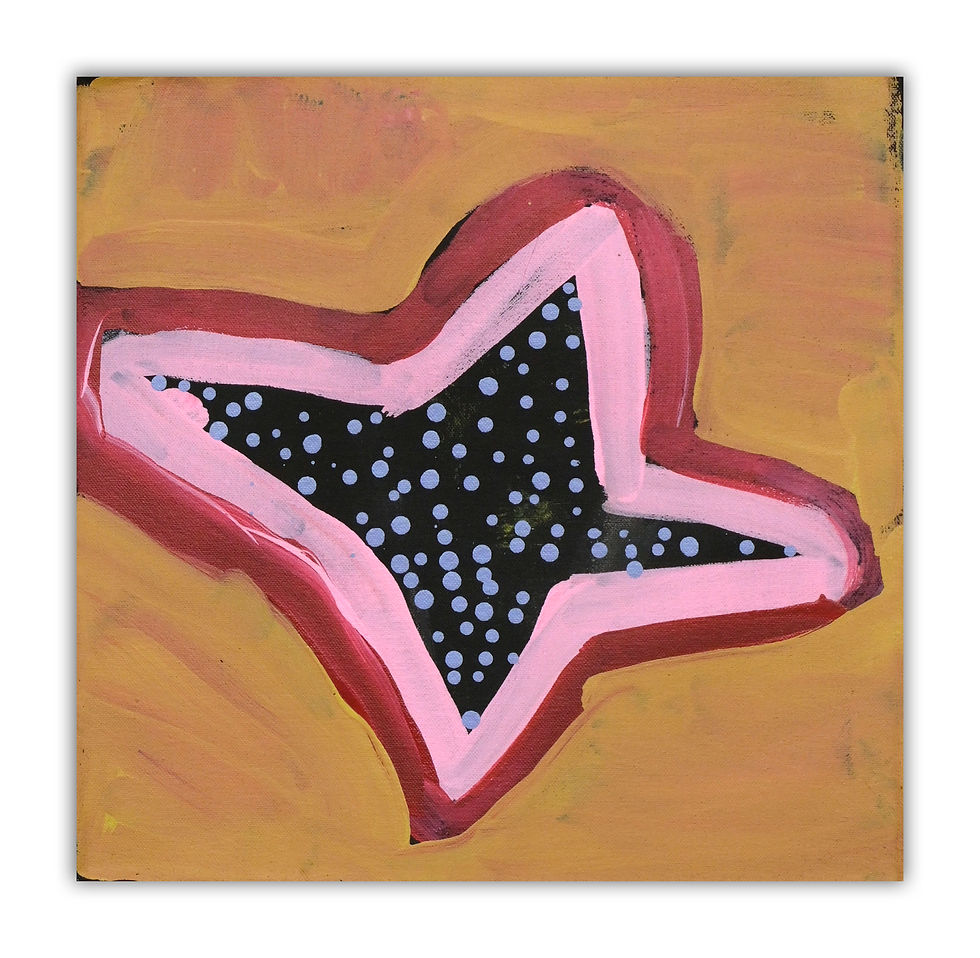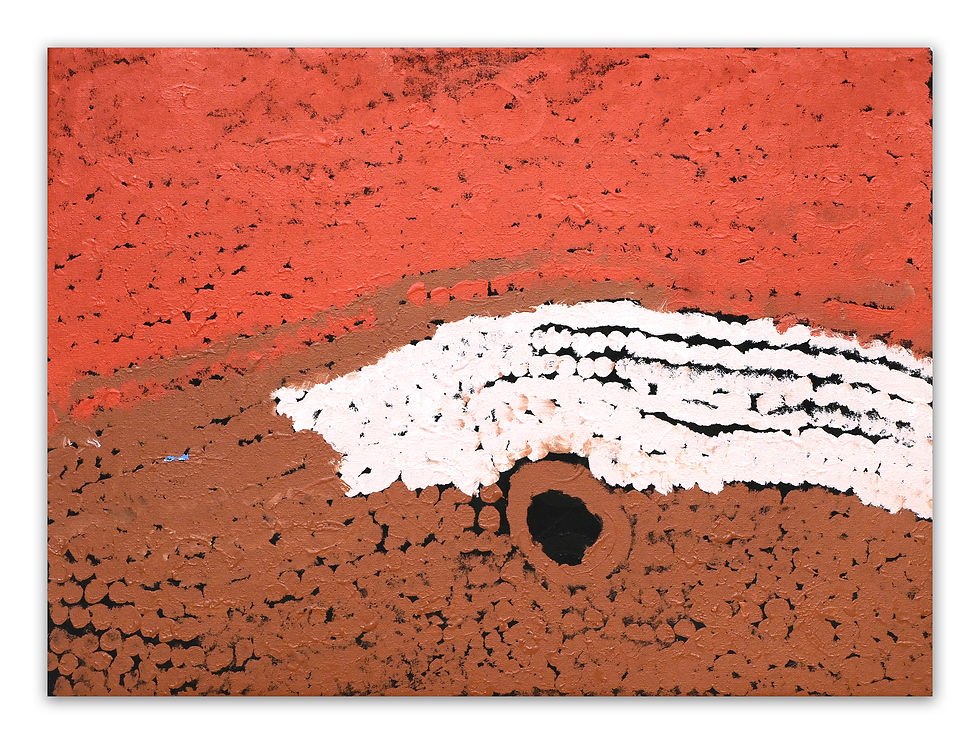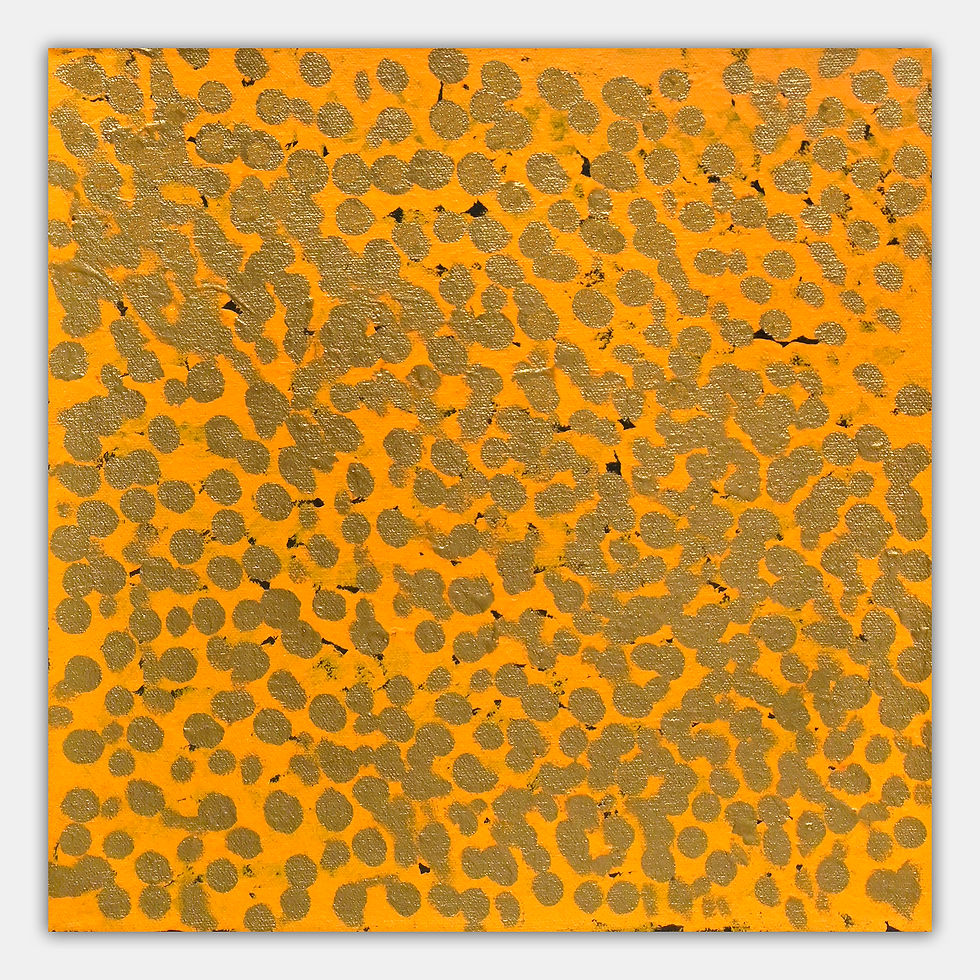JOHN TJAKAMARRA KIPARA - WALINNGI (WOMEN CATCHING SNAKE)
JIMMYJIMBO JOHNSON
PURNULULU, 1973
57 x 34 cm; 73 x 60 cm (framed)synthetic polymer powder paint on composition board
REGION
Warumpi (Papunya Western Desert) WA
PROVENANCE
Painted at Papunya, NT in 1973
Papunya Tula Artists, NT Cat No. JJ731226
Aboriginal Arts and Crafts, ACT
Anvil Gallery, Albury, NSW
Private collection, NSW
Sotheby's Australia, Melbourne, Vic, April 1991, Lot No. 60Private collection, NSW
Art Leven, Gadigal NSW
STORY
John Kipara Tjakamarra was a significant Pintupi artist born near Kulkuta, west of Tjukurla, and north of the present-day Kiwirrkurra community. Raised in the salt lake country southwest of Lake Macdonald, he lived a traditional lifestyle into adulthood. His family was among the first to be resettled in Papunya in the early 1960s, and he encountered Europeans for the first time in his 30s.
After arriving in Papunya, he worked with early artists such as Anatjari Tjakamarra, Yala Yala Gibbs, and Freddy West. He became one of the founding members of the Papunya Tula Artists group formed under the guidance of Geoff Bardon in 1971. Bardon described him as a "quiet and gentle man," whose early paintings echoed traditional sand mosaics used in ceremonial preparations.
Painted in 1973 this painting uses black traveling lines to depict a snake merging into its own tail and concentric circles representing the sacred sites women visited along the the journey to catch the snake. These visual symbols connect the land, the people, and their Dreaming stories. The work was exhibited in what was considered to be the first exhibition of Indigenous fine art in regional NSW when it was exhibited in Aboriginal Art from Papunya at The Anvil Gallery in Albury, NSW, in 1974.
In 1972, John Kipara participated in a film on traditional hunter-gatherers and continued traditional practices such as spear-making and hunting. He lived and worked at Yayayi outstation, where art advisors like Peter Fannin supported the artists. Sales of their art significantly improved local resources, and the artists began to receive government painting allowances.
John collaborated with fellow artists on group canvases, reflecting the communal nature of cultural knowledge. A notable example was a large Tingari canvas exhibited at Australian Perspecta 1981, a milestone that brought Western Desert painting to national and international attention and helped redefine Australian contemporary art.
He returned to his homelands in 1974 and was part of the major 1981 movement to re-establish the Kintore community. John lived the remainder of his life at Walungurru, where he continued to hunt and uphold traditional knowledge into the 1990s. By the end of the decade, he had largely stopped painting. He passed away in 2002, aged 72, leaving a legacy as one of the key figures in the Papunya Tula movement and a custodian of Pintupi culture.

















